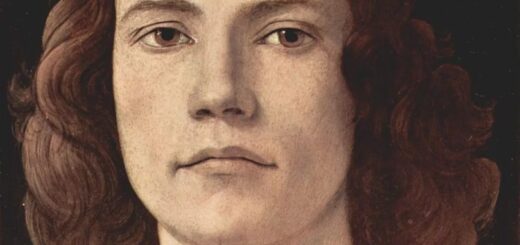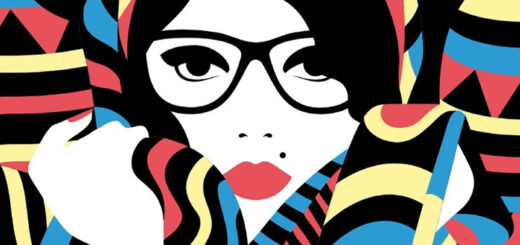A genderbender warrior. The fabulous life of Giovanna D'Arco
Article by Kitretged Cherry published on his blog Jesus in Love (United States) on May 30, 2016, freely translated by Silvia Lanzi
It is thought that Giovanna D'Arco was a cross-show warrior (the one/the one who dresses like the opposite sex) teenager who, at seventeen years, brought the French army to victory. His party falls on May 30th. Holy and courageous, Giovanna D'Arco (c. 1412-1431) had visions of saints and angels who told her to cut her hair, dress as a man and go to war. At eighteen years he helped to crown a king and nineteen was killed by a church that later made her holy. He died of the law, given to them by God, to wear male clothes, crime for which he was executed on May 30, 1431.
Contemporary LGBT people recognize a spirit affine in their stubborn challenge to the rules of genres. Queer writers tend to minimize the Christian faith of Giovanna, while the Church does not consider the importance of its disguise. In reality Giovanna strongly believed in God and in disguiseism. He insisted that God wanted her to wear male clothes, making her what can be called "queer" or "transgender" today. He adheres to the medieval archetype of the "Holy Landing". The transvestism was illegal, but what really amazed the ecclesiastical authorities, then as today, was the audacity of being proudly queer and devotedly Christian. His belief that God was the source of his oddity genderBending (Genderbender is the one/the one who does not recognize himself in pre -established sexual roles) makes it a model of special inspiration for LGBT Christians and their supporters.
Giovanna's extraordinary life continues to fascinate people of all kinds. Many are eager to claim it as a symbol, from LGBT people to feminists, to the Catholic Church, to the French nationalists. Giovanna is the subject of more of ten thousand books, works, paintings and films, including the recent works of the Author Transgender Leslie Feinberg and the Lesbian theater writer Carolyn Gage.
Carolyn Gage's One-Woman Show The Second Coming of Joan of Arc (the second coming of Giovanna D'Arco) It is a classic underground with Giovanna who acts like "A disguised lesbian, teenager and out of control" which confronts the institutions dominated by males. Leslie Feinberg wrote a chapter on Giovanna as "A bright transgender peasant and teenager who leads an army of laborers in battle" in his historical book Transgender Warriors: Making History from Joan of Arc to Dennis Rodman (Warrior and Transgender Warriors: make the story from Giovanna D'Arco to Dennis Rodman).
The vast documentation on his processes by the Inquisition make Giovanna D'Arco the best documented person of the fifteenth century. It has been suggested that it may have been a lesbian, but its trans expression is clearly evident as disguise. Giovanna D'Arco, an original name Jeanne D'Arc, was born to make the peasant in a dark village of Eastern France around 1412, towards the end of the war of the hundred years. Most of France was occupied by England and nobody dared to crown Carlo, the heir to the throne of France. When he was thirteen Giovanna began to hear voices that told her to help France free himself from England.
The visions continued for years, becoming more frequent and detailed. One or twice a week he had visions of the Archangel Michael and two Sante Virgini: Caterina d'Alessandria and Margherita d'Antoch (another saint disguised who refused to get married); They told her that God wanted him to meet Carlo and guided a Army in Reims for his coronation.
Giovanna's family tried to convince her that the visions were not true and her first attempt to visit the Royal Court was rejected. At the age of seventeen he dressed as a man and managed to meet Carlo. He agreed to dress it as a knight to conduct an army of 5,000 men against the British. By order of Carlo, an entire armor to give to Giovanna was manufactured. He made her a banner and a entourage assigned them to help her: an armigero, a vallery, two heralds, a chaplain and other servants. When he traveled with the army, Giovanna's appearance made fearful soldiers and laborers. On the back of a splendid war horse riding through the blatant crowds wearing the armor. His hair was "Cut and short and round like those of a young man". He wore an ancient sword in one hand and his banner in the other. His sword was found, as Giovanna had predicted, buried in the church of Santa Caterina in Fierbois. The banner shows Christ sitting on a rainbow against a white background with golden lilies and the motto "Jhesus-Maria". The legend says that white butterflies followed Giovanna wherever she ridden with her explained banner. With Giovanna driving the army won the battle of Orléans and continued to defeat the English and pro -injeished troops, until reim. He remained proudly alongside Charles VII during his coronation in Reims on July 17, 1429. Giovanna soon began to lead military countryside. Even during his life the laborers venerated her like a saint, crowding around her to touch her body or her clothes. Her disguiseism did not disturb them, on the contrary it seems that they honored her for her transgender experience. Perhaps, as some scholars claim, the laborers saw Giovanna as part of a tradition that combined disguises and priests in pre -modern Europe.
One of the first modern writers to raise the possibility of Giovanna's lesbism was the English author Vita Sackville-West who underlined that Giovanna was a lesbian in her 1936 biography Saint Joan of Arc (Santa Giovanna d'Arco). The primary source of this idea was the fact, documented in the processes, which shared the bed with other girls and young women. Giovanna followed the medieval habit of staying every night in a place of the place and always slept with the owner or serves at home instead of men.
Joan of Arc: Her Trial Transcripts (Giovanna D'Arco: the transcriptions of her process) By Emilia Philomena Sanguinetti is a 2016 book that tries to find out if Giovanna was lesbian or transgender. Many evidence of the fact that Giovanna D'Arco was lesbian or transgender are presented in the epilogue of this innovative book on the medieval saint disguised. The author analyzes how Giovanna shared her bed with another woman and insisted on wearing male clothes.
Nobody knows for sure if Giovanna D'Arco was sexually attracted to women or had lesbian experiences but her abstinence from sex with men is well documented. His physical virginity was confirmed by official examiners at least twice during his life. Giovanna he liked to be called the Pucelle, the French term for "Pulzella" (Virgin), a nickname that emphasized its virginity. Witnesses to his process affirmed that Giovanna was caste and not sexually active.
Giovanna's illustrious military career ended in May 1430. The French allies of the British was captured in battle. During his imprisonment they called her "Hommase", an insult that means "man-woman" or "masculine woman". With a stunning betrayal Carlo Vii did nothing to save the warrior who helped him win the crown. It was normal to pay a redemption for the release of the knights and the nobles taken in battle but he abandoned Giovanna to his destiny. Historians think that the French aristocracy was afraid of a young peasant woman with the disconcerting power to shake the masses.
The Burgundi gave Giovanna to the British, who in turn passed it to the Inquisition. He spent three months of torture in prison before the ecclesiastical trial in Rouen began, the headquarters of the English employment government, January 1, 1431. It was accused of witchcraft and heresy. The process of the Church, politically motivated, was manipulated against her but Giovanna was able to show her full intelligence by answering the questions of the inquisitors. His argument and thin answers and his detailed memories forced them to stop holding public process. Witchcraft was difficult to try, so the Church dropped the accusation (many pagans and Wiccan of the present day consider it as one of them). The inquisitors began to focus exclusively on the "heresy" of Giovanna's claim to be following the will of God when he dressed as a man. The judges told her that the transvestism was "An abomination before God", according to the law of the Church and the Bible (Deuteronomy 22: 5). Gave Giovanna Di "Stop the dresses of the female sex, something contrary to the divine law, abominable before God and forbidden by all the laws" and instead of "Dress and arm yourself as men do". Giovanna swore that God wanted her to dress men's clothes. He witnessed: “For nothing in the world I will swear not to arise and not to wear male clothes; I have to obey the orders of Our Lord ". The judges was outraged by continuing to appear in court wearing what they called "Diffrageda habitus" ("Monstrous clothes" or "Degenerate appearance").
Today the conservative admirers of Giovanna say that he wore male clothes only as a way to avoid rape, but she herself said that the transvestism meant much more for her and that she saw him as a sacred duty. The judges summarized Giovanna's testimony saying: “You said that, by command of God, you continued to dress men's clothes, wearing short tunics, cloaks and socks that sketch; You also cut short hair, 'en rond' above the ears, without leaving anything that could show that you are a woman; And that on many occasions you have received the body of our Lord dressed like this; Although you have been warned several times to let it go, you refused to do it, saying that you would have preferred to die than to stop, because it was an order of God ". Giovanna refused to withdraw from the visions received by God and was imposed on the death sentence. It was burned on the stake on May 30, 1431 in Rouen. Twenty -five years later it was tried again and the sentence was overturned. Giovanna was declared innocent.
His armor, that "Monstrous dress", became an object of veneration, wanted as the Sacred Grail, with various churches that claimed its possession. Giovanna D'Arco was canonized in 1920. The list of famous writers and composers who composed works on her includes Shakespeare, Voltaire, Verdi, Tchaikovsky, Mark Twain, Bertolt Brecht and George Bernard Shaw. A stunning portrait of Giovanna who kisses his sword was painted by the artist Preraffaellita Dante Gabriel Rossetti.
This post presents contemporary portraits of Giovanna by Rowan Lewgalon, Robert Lentz and Tobias Haller. Lewgalon is a German spiritual artist and priest of the Apostolic Veterocathian Church. You can admire his worksTir- ANAM.WEEBLY.com. Robert Lentz is a Franciscan friar known for its innovative Pro-Lgbt icons. He is stationed at the Holy Name College by Silver Spring in Maryland. Its icons are available onTrinitystores.com.
"Jeanne D'Arc" was outlined by Tobias Haller, an iconographer, author, composer and vicar of the Saint James Episcopal Church in the Bronx. He is the author of Reasonable and Holy: Engaging Same-Sexuality (reasonable and sacred: living in homoerotic sexuality). Haller likes to increase the variety of available icons creating icons of LGBT people and other holy and progressive figures as well as traditional saints. He and her husband have been married to religious rite for more than thirty years ago and with a civil ceremony after homosexual marriage has become legal in New York.
A very popular prayer to Giovanna D'Arco is a powerful declaration that can inspire those who believe in the equality of LGBT people despite the refusal of religion and society: “In front of your enemies, in the face of harassment, ridicule, doubt, you were stopped in your faith. Even in abandonment, alone and without friends, you have been firm in your faith. Even in the face of your mortality, you have been firm in your faith. Please be able to be courageous like you in my belief, Santa Giovanna. Please, stay close in my battles. Help me to be mindful that what is worthy can be achieved, if persisted. Help me believe in my chances of acting well and wisely. Amen".
Giovanna is in dialogue with a fire that is about to consume her in the obsessive song written by the award -winning Canadian poet Leonard Cohen and sung byJuly Collins.
Original text: Joan of Arc: Cross -drew Warrior-Saint






